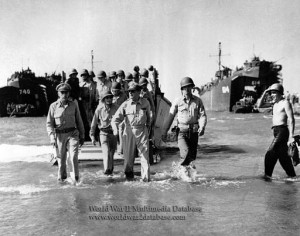I was spending the weekend with my mom. She’d gone to bed early and I didn’t want to make a lot of noise. I looked for something to read and found a spiral binder – “Personal Log of A.J. Bauerlin.”
A.J. “Bert” Bauerlin was my mom’s boyfriend for over 10 years, and we loved him dearly. Bert first entered our family when my sister and her family moved next door to him in Martinsville, Va. “Mr. Bert” was a second grandfather to my niece and nephews, and we always heard stories about their next-door neighbor’s kindness and handiness.
A few years after Bert’s wife, Mary, passed away, my mom went up to Martinsville for a visit. She and Bert hit it off, and they began a 10-year long-distance relationship.
Every night at 10 p.m. without fail, Mom’s phone rang. It was Bert and nothing could keep my mother away from the telephone.
On holidays, Bert sent my mom flowers and every year, they’d travel to Bert’s naval reunion. Sadly, each year fewer and fewer veterans attended, but even at the age of 90, Bert was still going strong.
In 2004, Bert decided to write down his memories of his service in World War II. As was true to his nature, Bert dictated his thoughts into a recorder in a logical manner and double checked his memories through newspaper clippings and official online resources.
Mom had mentioned how proud Bert was of the memoir; so when I saw the binder, I pulled it out and began reading.
It was amazing how organized Bert’s writing was, and I found myself reading late into the night. I took the book home and not only saw the war through Bert’s eyes, but life back in the 1940s.
Bert talked about the prices of homes and cars and his childhood. He remembered the day he and his father were listening to an Eagles football game on the radio.
In the middle of the game, the announcer said they had an important message from the president. He told America about the attack on Pearl Harbor that morning.
As Bert put it, the “sleeping giant” had come awake; and by the time he was 16 and a half, he made up his mind to join the U.S. Navy. He’d read countless tales about pirates, and he figured the seven seas were for him.
On his 17th birthday, Bert enrolled in the U.S. Navy, lived through boot camp and attended signalman’s school. Bert was assigned to an L.S.T., a ship that carries guns, ammunition and about 600 soldiers.
Over his time in the service, Bert saw primitive cottages in Anchorage, ate with a family in Australia, lived through terrifying typhoons and stood on the deck as kamikaze pilots came within 100 feet of where he was standing, guns blazing.
He sailed across the seven seas, crossed the Equator, lived in fear of enemy submarines, and celebrated on the day the Japanese surrendered. From the bridge of his L.S.T., Bert saw Gen. Douglas MacArthur wade ashore in Leyte.
One night, he sounded the alarm when a kamikaze plane was coming straight for the ship and probably saved the lives of everyone on the vessel.
Through Bert’s words, I learned so much about the life of a sailor, the pranks young men play to take their minds off the real threat of death and of one man’s desire to protect his country.
I reluctantly finished reading Bert’s memoirs, and I wished he was still alive so I could thank him for his sacrifices and for such a well-written accounting of those three years.
So to all veterans, thank you for your service. Thank you for putting your life on the line to protect those of us who often take liberty for granted.
And to Bert’s children and grandchildren – you have an outstanding legacy in your dad. I’m lucky to have known him.

US Army General Douglas MacArthur restages his landing from an LVCP on Leyte, Bert was on the L.S.T. behind the general.